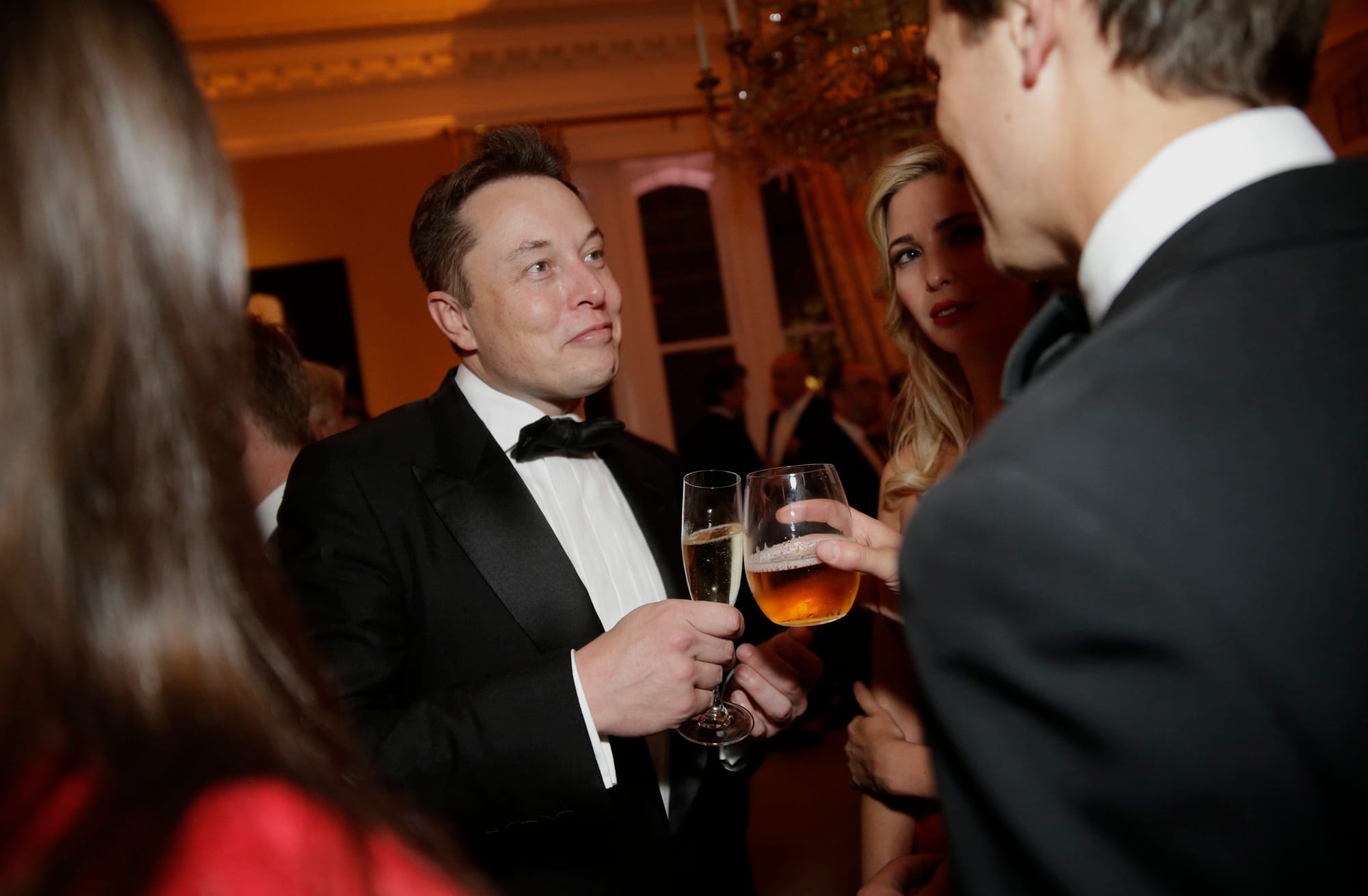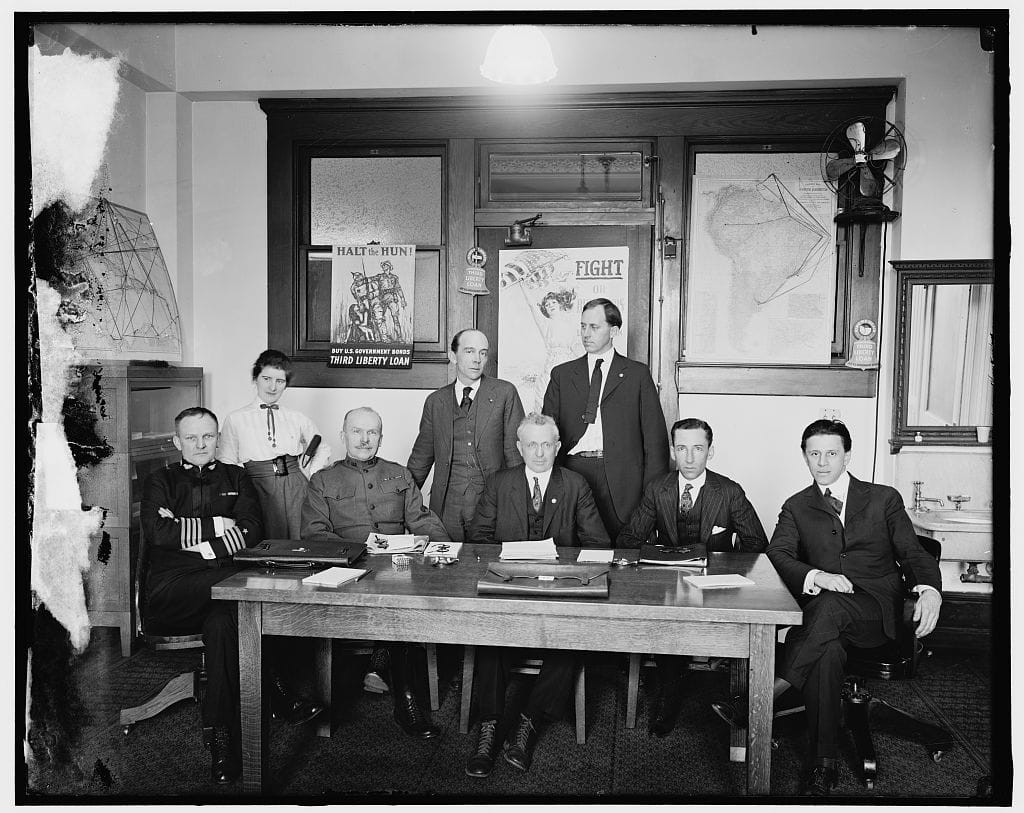The fundamental things apply / As time goes by
Woman needs man / And man must have his mate / That no one can deny
It's still the same old story / A fight for love and glory / A case of do or die
The world will always welcome lovers / As time goes by
Oh yes, the world will always welcome lovers / As time goes by
"As Time Goes By," 1931

There's a lot of gender happening lately, isn't there? Men and women are increasingly politically polarized; in the most recent election young women voted Democrat by a 12-point margin compared to men. Abortion rights and trans rights are everywhere on the ballot. MeToo ripped the veil of silence off an epidemic of rape and sexual harassment across elite society. Every once in a while an angry boy buys an assault rifle and murders a crowd of people; afterwards he is found ranting about "Beckys" and "Stacys,” "Chads" and "the black pill." Meanwhile thinkpiece after thinkpiece is generated on the "epidemic of male loneliness;" meanwhile the number of never-married women has increased from under 25% to over 30% since 1990. The world's richest man, who has recently spent a quarter of a billion dollars to buy himself a seat in the next presidential administration, stays up all night posting about how boobs in video games are too small these days.
And then of course there's the birthrates thing. They're going down (you may have heard). This phenomenon in particular is an obsession across the right. Of course one gets the sense that any conservative who starts going on about birthrates is about .05 blood alcohol content away from screaming out the fourteen words: "we must secure the existence of our people and a future for white children." They view declining birthrates not as an economic or a civilizational problem but a racial one: their "race" is dying out.
This has made the topic of birthrates a bit taboo in liberal circles: no one wants to go near that dumpster fire. And yet. Consider South Korea, where the birth rate is at .8 per woman and falling. In other words, South Korea is a nation that is going to halve in size each generation. Doesn't that strike you as a bit... odd? Like maybe this is a symptom of some deeper problem?
It is the contention of this essay that it is. The problems just reviewed are not many crises, but one: a crisis in gender relations. The problem is real, and it has a material cause—but not a material solution. We can start by talking about the birthrates thing, for unlike social media outrage it is measurable.
The birthrates thing
For most of human history, the population was relatively stable. Birthrates were enormously high—the average premodern woman would spend most of her adult life nursing or pregnant—but death rates were equally high, especially among children. This was the age of the Malthusian trap, in which any living standard gains from increases in productivity would rapidly be eaten up by new mouths.
Around two hundred and fifty years ago, give or take, we escaped the trap. Productivity per worker began skyrocketing. Modern abundance—and especially modern science in the form of sewerage, clean water, public sanitation, vaccines—caused death rates to plummet. As a result the population exploded: between 1800 and 2000, Europe went from 195 million to 727 million, Africa from 81 million to 809 million. This was the world that prompted Paul Ehrlich's notorious "population bomb" theory, in which ever-increasing human numbers would soon bankrupt the planet's carrying capacity.
We escaped that trap too, through the "demographic transition." The death rate stayed low, but the birth rate started falling across the developed world. This appears to have both economic and cultural causes, and is increasingly a universal human phenomenon. In 1979 the Communist Party of China, under the influence of the ideas of Ehrlich and the Club of Rome, instituted the one child policy; in 2015 they revoked it, and today they are working desperately to increase the birth rate.
The decline in birthrates is often attributed to the cost of raising children. In the premodern world children went to work as early as six or eight, and thus constituted an economic benefit to the family; in the modern world they don't start working until they're teenagers, later if they attend college, constituting a huge upfront cost without much return for decades, if ever. "Surely this explains why birthrates are decreasing." It does not. Various countries have experimented with various degrees of income support for parenthood: paid maternity/paternity leave, childcare subsidies, direct cash payments. The effect on the birthrate of all these programs appears to be approximately zero.
What is relevant to the birthrate is how many children women want to have—shocking, I know. In countries where women want to have more children, women have more children. America and South Korea make good contrast cases. In America women want to have 2.7 children, and have 1.7. In South Korea women want to have 1.4-1.8 children, and have .8. Neither American nor Korean women have as many children as they say they want—but still, the number of children desired does seem to affect the number of children produced.
These are all facts. What remains a question is whether declining birthrates are a problem. Conservatives view declining birthrates as a civilizational—which is to say, a racial—crisis. This is the wellspring of "great replacement" conspiracy theories, the reason the fourteen words are central to white nationalist ideology. They believe their race is dying out, or at least being outcompeted by "inferior" races. As noted above, the stink of this idea has left liberals unwilling to admit that declining birthrates could be any kind of problem at all.
But they are. South Korea provides a useful case study. As noted earlier, each subsequent generation of South Koreans will be half the size of the previous. This will generate serious social problems. An ever-shrinking workforce will be required to support an always-larger population of retirees; as larger amounts of economic production are devoted in this direction, economic growth will slow. The prospects of the new generation will be just that much dimmer than their parents'. On top of this, South Korea shares a land border with a bellicose neighbor that even now proposes to conquer and subjugate it. Decreasing populations means decreasing military capacity, and in an era of declining population every casualty in war is irreplaceable. (It is for this very reason that Ukraine's military conscription begins at 25—and this after being lowered in 2024.)
In America it is easy to ignore these problems. We are bordered by two peaceful neighbors and two vast oceans and possess history's most preeminent military. The idea that war might ever touch the homeland is unimaginable. Americans have more children, and in addition to the domestic birthrate, America has proven unusually good at attracting and integrating immigrants, at least as compared to peers or competitors like China or Europe. America is not facing a material crisis of birthrates—but other countries are.
And yet. There is something more, isn't there? This niggling feeling that there's something wrong. Something more than the material problems I've outlined. So let me be clear: there is something wrong with a social form that cannot reproduce itself. It suggests that, on balance, the people of that society don't think their way of life is worth continuing. (And likewise there is something wrong with a social form that can only reproduce itself given the existence of poor, high-birthrate neighbors to supply a continual stream of human clay.) This is not a point about this or that race or people, because frankly "races" don't exist in any biological sense. This is a problem endemic to the developed world: it reflects something about the societies we have made.
So what has gone wrong in the modern world?
The patriarchal bargain
To talk about today we must talk about the past. If our social form does not any longer reproduce itself, we must ask: how did it formerly reproduce itself? And why has that mode of reproduction broken down? The answer to the former question is simple: our society once reproduced itself according to the patriarchal bargain.
In the simplest terms, the bargain works like this: women provide reproductive labor in exchange for security. Reproductive labor includes childbearing, but also childrearing, and also—this part is important—guarantees of paternity. Security includes economic security as well as physical security. The bargain has a variety of interesting conundrums—the goods are exchanged not once but continuously; once it is made the woman has little ability to alter its terms. In other words, she puts herself into the power of a man in the hope that he holds up his end of the deal. Needless to say, it is not a great bargain to make—but in many societies, it has nevertheless been a woman's best option.
That is because the patriarchal bargain is sustained by a broader social context. This context can be expressed simply in terms of North, Wallis, and Weingast's rents-exclusion dynamic. Women are excluded from social participation, especially economic participation. This is not to say that women do not engage in production—they almost always do, especially household production—but without the ability to engage in public social participation, they have little ability to set the terms of that labor. The bank account belongs to the husband, so to speak.
As a result of women's exclusion, rents accrue to men. In order to acquire a share of those rents, women are forced into an unequal bargain. If women want material prosperity and physical security, they have no choice but to make the patriarchal bargain and put themselves into the power of a husband.
The root causes of women's exclusion are various. The plough appears to be a major cause of patriarchy, insofar as it gives men a substantial economic advantage over women as compared to hoe-based agriculture. In other cases, such as purdah, the root of the exclusion appears to be purely cultural. Regardless, economic and cultural exclusions feed back into one another.
So far, so bleak. Here's the thing: the material basis of the patriarchal bargain is breaking down, and it has been for about two centuries. This was obvious in 1988, when Kandiyoti coined the term "patriarchal bargain," and that breakdown has not abated a whit in the intervening decades. The root cause of the breakdown is simple: we call it the modern world. The condition of modernity is continually increasing worker productivity as a result of technological progress—sustained long run per capita economic growth.
What this has meant for women is a society in which they have options outside the patriarchal bargain. Simply working for a wage is enough to provide the security that once husbands exclusively controlled. Or, to put it more intuitively: the rise of two-income households isn't a result of economic hardship. It's a result of economic growth. You could live on one income—if you were willing to accept substantially less material goods. But you want the stuff. The returns to paid labor outside the home far exceed the returns to domestic production. Success in life is less and less defined by your ability to drive a plough or swing a sword and more and more by your ability to produce in a technologically and industrially advanced economy.
It is unlikely, in other words, that the patriarchal bargain can ever be reconstructed. The condition that drives women's liberation is the condition of modernity itself: the technological and productive progress that is the source of modern material abundance—and the power modern abundance brings. No one is willing to give that up, though the tension may vex reactionaries.
The stories we tell
So much for the patriarchy—right? Hardly. The patriarchy had a material basis and that material basis is eroding, but that material basis had a cultural symbiote, and the symbiote endures. By which I mean: patriarchy is not just an economic structure. It is a story we tell ourselves about women and men—about what they are for, who they are to each other, what makes a good woman and a good man—and that story has staying power independently of patriarchy's material basis.
Where to start on this? I'm a sucker for the classics. So let's start there: The Big Sleep, starring Humphrey Bogart and Lauren Bacall, 1946. The plot is... convoluted. But the archetypes are familiar. Bogart is Philip Marlowe, the coolest, toughest, canniest private eye you ever met. Bacall is Vivian Rutledge, rich and beautiful—and the coolest, toughest, canniest dame you ever met. As the trailer puts it, "That man—Bogart! And that woman—Bacall! Are that way again!"
But here's the thing: being strong isn't enough to make Marlowe a good man. Eddie Mars, gangster and antagonist of the film, is strong and tough and smart—but he's not good. Marlowe's a good man because while he might be a disrespectful wiseass, he's decent when he doesn't need to be.
And here's the other thing: being beautiful isn't enough to make Vivian a good woman. Carmen, her sister, is beautiful as anything, but faithless and wild and kind of a mess. What makes Vivian the real deal is how she sticks to her word no matter what—indeed, Marlowe compliments her on sticking to her word to Mars, even well past when it was in her interest.
In the dry terms of social science we call this "costly signaling." It's easy to make promises on a sunny day—easy to keep them too. What you do in the dark when no one's watching and every interest says "break it," that shows your real character. A good man, he's gotta be good and he's gotta be strong and it's gotta be both. A good woman, she's gotta be beautiful and she's gotta be faithful and it's gotta be both. The drama of these stories is always women and men dealing with the tension between their two desired attributes. But the reason it's those two specifically, for men and women specifically, falls out of the nature of the patriarchal bargain.
A woman needs a man who is strong enough to provide material and physical security, but she also needs one who is decent enough to keep providing that after she's signed on the dotted line and doesn't have any recourse. A man needs a woman who is beautiful enough to bear beautiful children, but he also needs one who is faithful enough so he can be sure those are his kids he's raising. Kind of a tawdry analysis behind a beautiful movie, but there it is. (Maybe, somewhere in the interstices of all that tawdry bargaining, we might find—love. But that's a tough flame to catch, and keep alive. More on this later.)
Let's take another example. By the time Die Hard is released in 1988, the story is changing. Die Hard is a story about cops and robbers, gunfights and explosions, but before the first terrorist walks onto screen the movie makes its stakes clear: will the hero get the girl? In this case, the girl is Holly Gennaro, who has moved to Los Angeles to take a high-paying job. It's made clear she no longer needs her husband for material security—the Rolex she's earned as a bonus is the symbol of that—as is the fact that she no longer uses his name.
But then: terrorists, gunfights, the inimitable Alan Rickman's Hans Gruber. Holly might not need John McClane for economic security, but she sure as hell needs him for physical security. And at the climax of the movie, John takes that Rolex off her wrist, sending Gruber plummeting to his death—and she takes his name again, introducing herself to the TV cameras as Holly McClane.
These days the story is getting even more strained at the seams. Patriarchy-as-narrative is plainly visible in manosphere culture. Andrew Tate, Romanian sex trafficking kingpin, is selling a vision of patriarchy to young men—a vision of male power and female dependence. A young man posts on Instagram "She doubled her body count, so I doubled my body weight." This is not just classic patriarchy, but a reaction to its breakdown, doubling down on its worst aspects—raw power and domination without love. This is what MacKinnon called the sexual fetishization of female submission; in the manosphere even actual love and sex become secondary to the act of power.
The story endures even as the story stops making sense.
A new archetype
These are all stories about what makes for a good man. They are adapted to a certain material reality—the world of the patriarchal bargain. A world where women need men for economic or physical security. But mostly, we are not being taken hostage by elite European terrorists. We live in a safe world; indeed, the modern world has some of the lowest rates of violence (murder, assault, rape) ever recorded. More and more, women don't need men. And men haven't figured out how to adapt to that.
Declining fertility is precisely a symptom of this breakdown. As Alice Evans documents, the rise of singlehood among young people is not a result of women not wanting marriage or children—but rather women finding the bargain on offer not particularly attractive. Men think they are happier and wealthier married—and they're right. Women think they are happier and wealthier alone—and they're right. The bargain is not good for women, and more and more we are declining to make it.
We need new stories. We need a new archetype. You gotta be worth choosing, not because she needs you, but because she wants you. The trick of gender is the trick of the modern world: learning to live together as free and equal citizens. Which is to say: telling a story in which we can be free and equal together despite our differences. A story about how men are useless and don't have worth and aren't worth wanting isn't really going to cut it, not as long as men remain half the human population.
To return to the rents/exclusion analysis, Francis Fukuyama argues that most successful reforms of such systems involve not the destruction but the extension of elite privileges to the masses. The aristocrat doesn't lose; the commoner gains. England did not abolish its royal courts; it allowed more and more people to use them, and an aristocratic privilege was transformed into a common right. You might think what I am saying is "just coddle men more." But what Fukuyama's analysis also suggests is that this process also involves elites consciously accepting equality, rather than digging in their heels and refusing to let go of their relative status. Our ability to build new narratives depends, in the end, on those narratives being embraced by both men and women.
What happens when the fundamental things no longer apply? What is a man to a girl who can buy herself flowers?
The knight saves the princess from the orc. That's a story about cool sword fights and glimmering dragons, but it's also a story about men and women and what they are to each other. A good man is a knight and not an orc; a good woman is a princess and repulsed by the orc's advances.
But what happens when the girl picks up the sword and kills the orc herself? What happens when she goes ahead and rules the kingdom without a man at her side? The knight has spent his life training for that moment—waiting for the moment he might prove his worth in the act of killing an orc. A dream evaporates—and now what does his worth consist in? Can he find a way to be something worth wanting for his own sake—a man who is wanted even despite not being needed? Until we figure out how to tell that story, the crisis of gender relations will not abate.
Or, you know, maybe we'll just take another step down the reproductive technology tech tree and solve the problem in another way. These days who even knows.
I can buy myself flowers
Write my name in the sand
Talk to myself for hours
Say things you don’t understand
I can take myself dancing
And I can hold my own hand
Yeah I can love me better than you can
"Flowers," 2023
Featured image is The Hireling Shepherd, by William Holman Hunt






